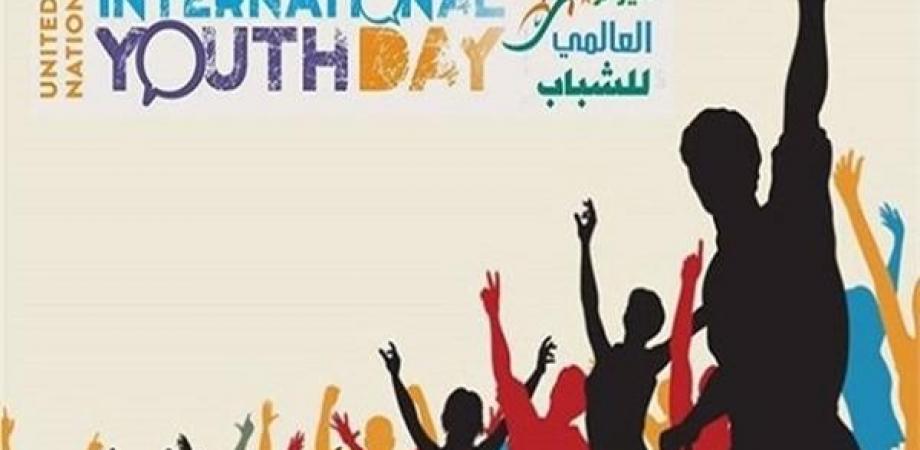On the occasion of International Youth Day, the Palestinian Central Bureau of Statistics (PCBS) issued a press release demonstrating the situation of the youth in Palestinian society.
In its resolution 54/120, the United Nations General Assembly designated August 12th of each year to be the International Youth Day, being key partners in making change, and in order to raise awareness on the challenges and problems facing the youth around the world.
The youth are the most vital and productive segment in the society. Thus, they are expected to have an important and key role in the recovery from all crises and challenges, of which the most recent COVID-19 pandemic. To that end, the UN announced that this year's anniversary is intended to highlight the participation of the youth and motivate them to work and engage in the local, regional and global movements under the theme “Youth Engagement for Global Action”, in addition to concluding morals and lessons learned in order to promote their presentation and participation in the different social, economic and political issues.
The United Nations defines the youth as the individuals in the age group (15-24 years) with the possibility of adjusting this category according to the specificity and need of each country. In this press release, the Palestinian Central Bureau of Statistics (PCBS) considered the youth in Palestine as the individuals in the age group (18-29 years).
The percentage of youth (18-29 years) in Palestine was about 22% (1.16 million) of the total population in mid - 2021 (22.3% in the West Bank and 21.8% in Gaza Strip). Whilst the sex ratio was 105 males per 100 females.
The illiteracy rate among the youth (18-29 years) in Palestine for 2020 decreased to about 0.8% (0.9% in the West Bank and 0.7% in Gaza Strip), while it was 1.1% in 2007 (1.1% in the West Bank and 1.2% in Gaza Strip).
Education is the real investment for Palestinians; given its importance on the individual and social levels. Hence, data for 2020 indicate that out of every 100 youth males and females aged 18-29 years, there are 18 youth who obtained a bachelor’s degree or higher. Perhaps youth females are the most fortunate, as 23 out of every 100 youth females obtained a bachelor’s degree or higher compared to 13 youth males. On the other hand, unemployment rates constitute the biggest challenge for the youth, as these rates reached 64% among females and 33% among males, and were the highest in Gaza Strip compared to the West Bank (67% and 24% respectively). Perhaps the highest rates of unemployment among the youth aged 18-29 years were recorded among graduates, including those holding an intermediate diploma or higher (54%) with a clear difference between youth males and females, 39% and 69% respectively.
The number of the employed youth in the informal sector reached 139,300 employees, of whom 130,600 were males compared to 8,700 females. The percentage of the employed youth in this sector represents 47% of the total employed youth in Palestine. Knowingly, the percentage of the employed youth in the informal employment in Palestine (meaning the employed youth in the informal sector in addition to wage employees who do not obtain any labour rights including end-of-service / retirement or annual paid leave or paid sick leave) has reached 75% of the total employed youth; of whom 79% are males and 43% are females (73% in the West Bank and 84% in Gaza Strip).
53% was the percentage of the youth (18-29 years) who are not in employment or education/training in 2020 (43% in the West Bank compared with 67% in Gaza strip). The percentage was 38% for males and 68% for females.
The percentage of youth females (20-24 years) who got married before reaching the age of 18 decreased to about 13 youth females per 100 females in 2020 (12% in the West Bank and about 17% in Gaza Strip), compared to 37 females per 100 females in 2010.
The percentage of the youth (18-29 years old) who smoke in 2020 reached about 22% (29% in the West Bank and 10% in Gaza Strip), while the percentage of youth males who smoke was about 22% compared to 5% among females.
During the period from the beginning of the COVID-19 pandemic in 2020 and until 28/7/2021, the Palestinian Ministry of Health documented 316,489 COVID-19 infection cases in the West Bank and Gaza Strip (excluding J1), of which 42,072 cases were among the youth aged 20-29 years (13.3%), Of them, 20,667 males and 21,405 females.
All educational activities received by higher education students during the period from 01/06/2020 to 31/12/2020 were remotely based on the decision of the Palestinian Government, where 94.7% of them attended lectures virtually via communication means. Moreover, 93.0% of the students took exams virtually via communication means or email, 80.8% of them used the educational institution portal to obtain educational links or educational resources, and 78.2% of them used the educational institution’s Facebook pages to obtain educational links or educational resources. As for the evaluation of these remote educational activities for higher education institutions, the results showed that most of the households evaluated them as: good, it served its purpose and good, it served its purpose and can be improved, where the percentages of the two options together were 82.6%, 85.3%, 86.4%, 88.4% respectively.
The percentage of the youth (18-29 years) who use the internet from anywhere reached 86% (90% in the West Bank and 79% in Gaza Strip), with no differences between males and females. Also, 94% of the youth, who use the internet, have used social or professional networks such as: Facebook, Twitter, LinkedIn… etc (96% in the West Bank and 91% in Gaza Strip).
Source : Safa


